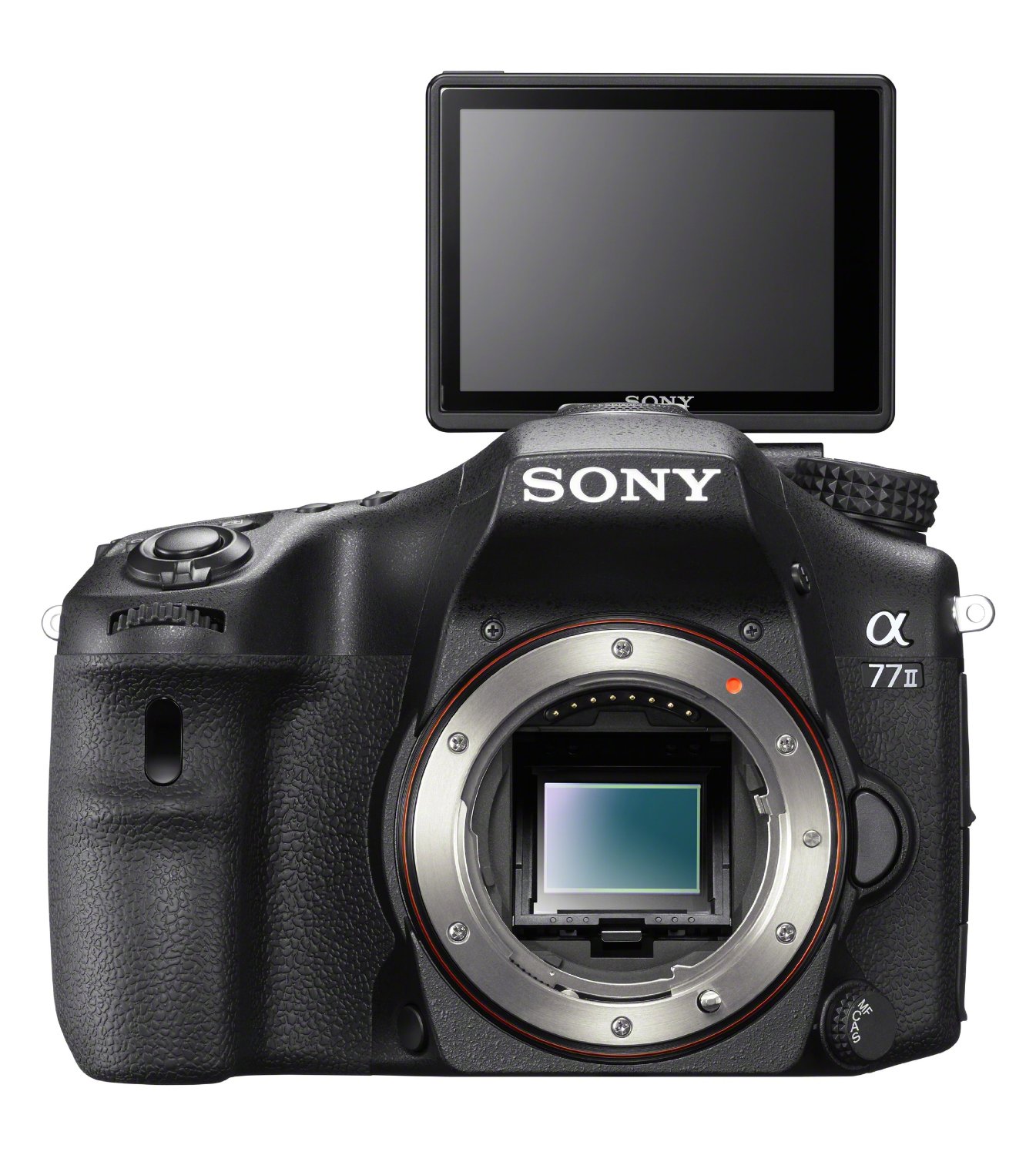Tom's Guide Verdict
Sony's Alpha 77 Mark 2 DSLR is a solid, fast-shooting camera that can do it all, but it especially shines in low-light settings.
Pros
- +
Tilt-and-swivel LCD
- +
Evenly exposed pictures with accurate color and sharp detail
- +
Wide ISO range for low-light photography
- +
Continuous shooting of 12 fps for up to 25 photos
Cons
- -
Eye sensor too sensitive
- -
Overly aggressive noise reduction at high ISOs
- -
Poor smartphone Wi-Fi connectivity
Why you can trust Tom's Guide
A variation on the conventional DSLR, Sony's Alpha 77 M2 camera is an upgrade of its popular Alpha 77 SLT (single-lens translucent) camera. This system lets a portion of the light through to a dedicated autofocus sensor while sending most light to the image sensor, providing a full-time live view as found on mirrorless cameras for shooting stills and videos. The $1,050 (body only) A77 M2 features a speedy new 79-point phase-detection autofocus system and a large ISO range to capture more detail in extreme low-light situations. With these improvements, can the new Alpha continue to impress, and take on competitors like Canon's $1,200 (body only) EOS 70D?
Image Quality
In general, pictures shot with the A77 M2 turned out bright, sharp and beautifully colored. Sony provided us with an f/2.8, 16-50mm SSM zoom lens ($800) to test the camera. We evaluated the camera's ability to set the right aperture, shutter speed and ISO light-sensitivity levels for even exposure by shooting on shutter- and aperture-priority modes. The A77 M2 performed well at these tasks, for the most part.
Bright-Light Results: Vivid Colors and Sharp Detail
In bright settings, the A77 M2 performed very well. My pictures of Central Park's Sheep Meadow on a sunny Sunday afternoon showed vibrant green blades of grass and a deep blue sky. The camera also retained the fine detail of wispy clouds in the sky.
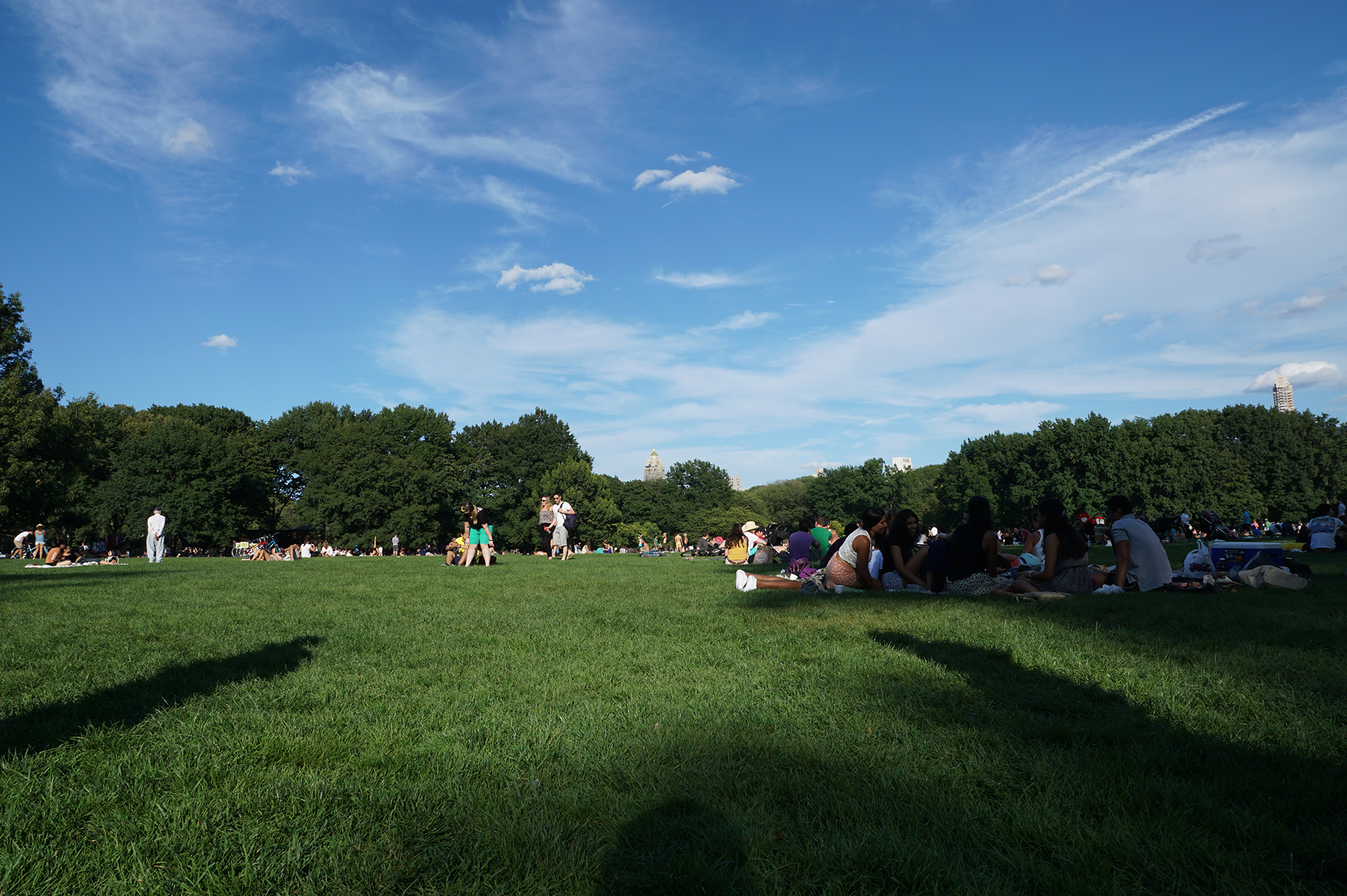
A portrait of my friend taken at the same place captured great detail with a pleasing shallow depth of field.
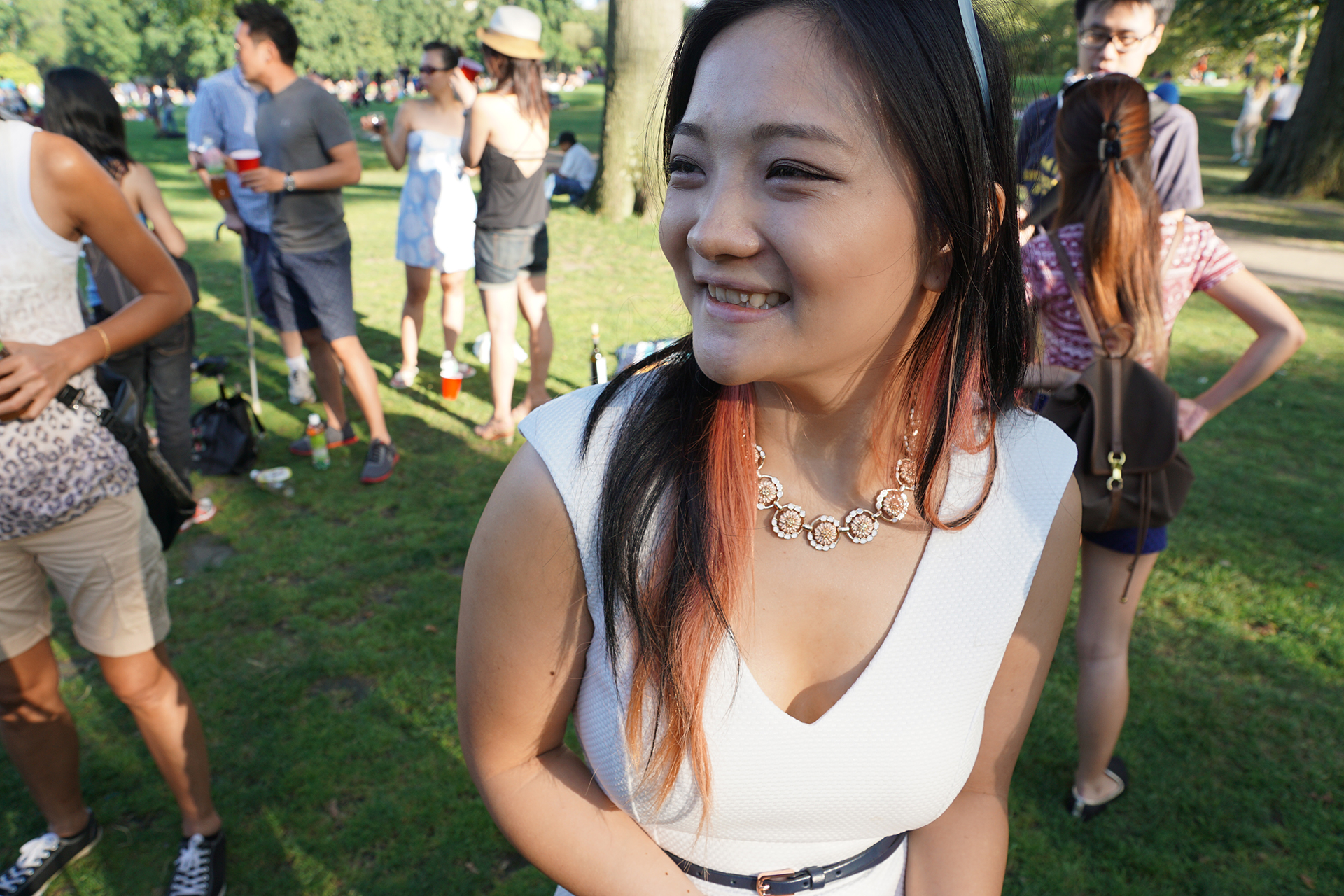
The A77 M2 accurately captured the pink and red strands in her hair, and kept the overall picture evenly exposed despite her bright white blouse. The flowers on her metallic necklace also rendered clearly. I did notice some distortion in this picture though, where people and trees in the background appear to be stretched diagonally toward the corners.
This photo was shot at the lens's widest focal length (16mm), which results in some distortion on most systems. So if you're getting this lens (which the A77 M2 is frequently bundled with), make sure to set the focal length a little narrower (20mm and up removes the distortion).
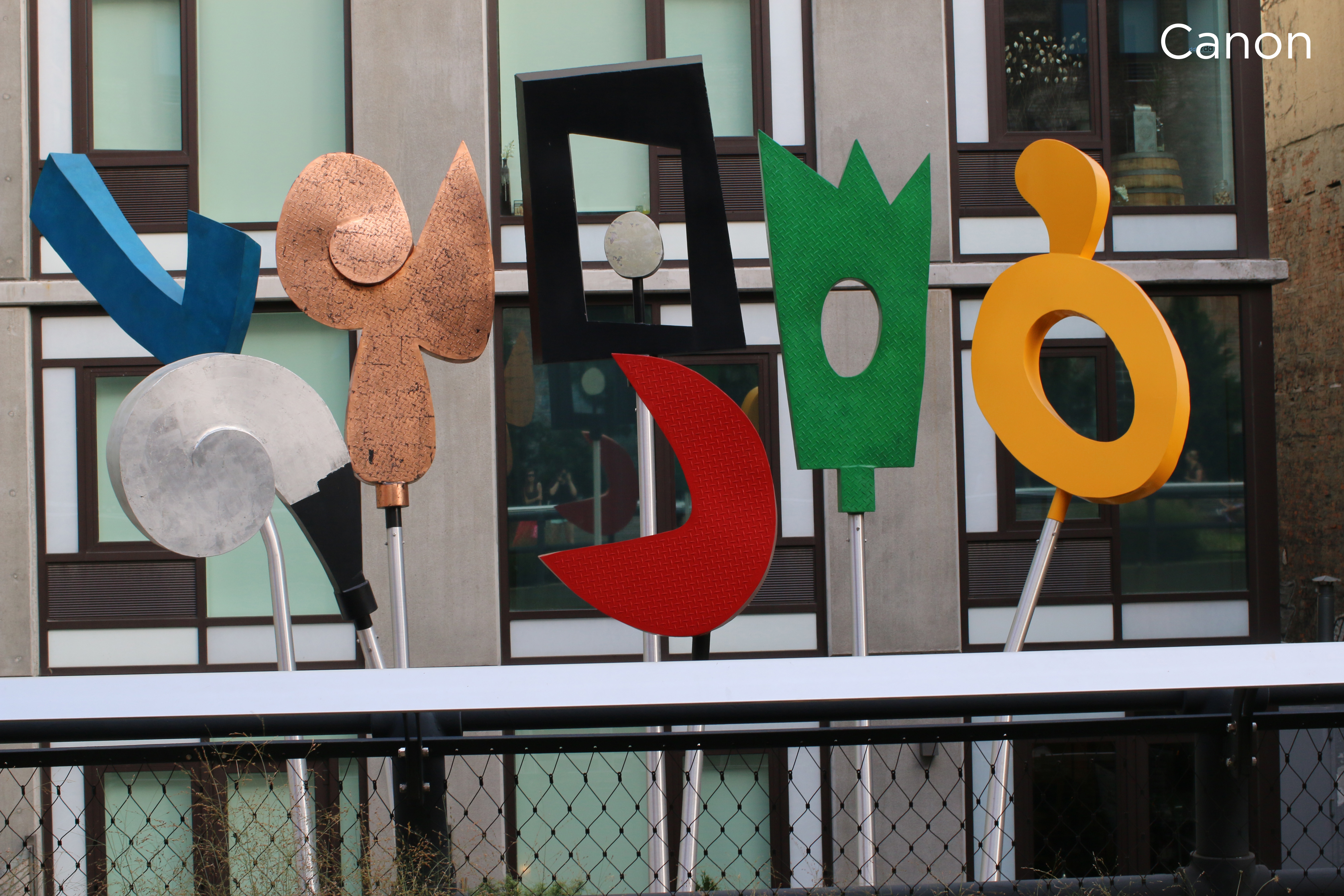
The Sony's color reproduction is as good as the quality from Canon's $1,200 EOS 70D DSLR, albeit with subtle differences. A colorful installation at the High Line park taken with both cameras showed similarly rich hues, with the Sony image showing a slightly blue cast while the Canon picture displayed warmer tones.
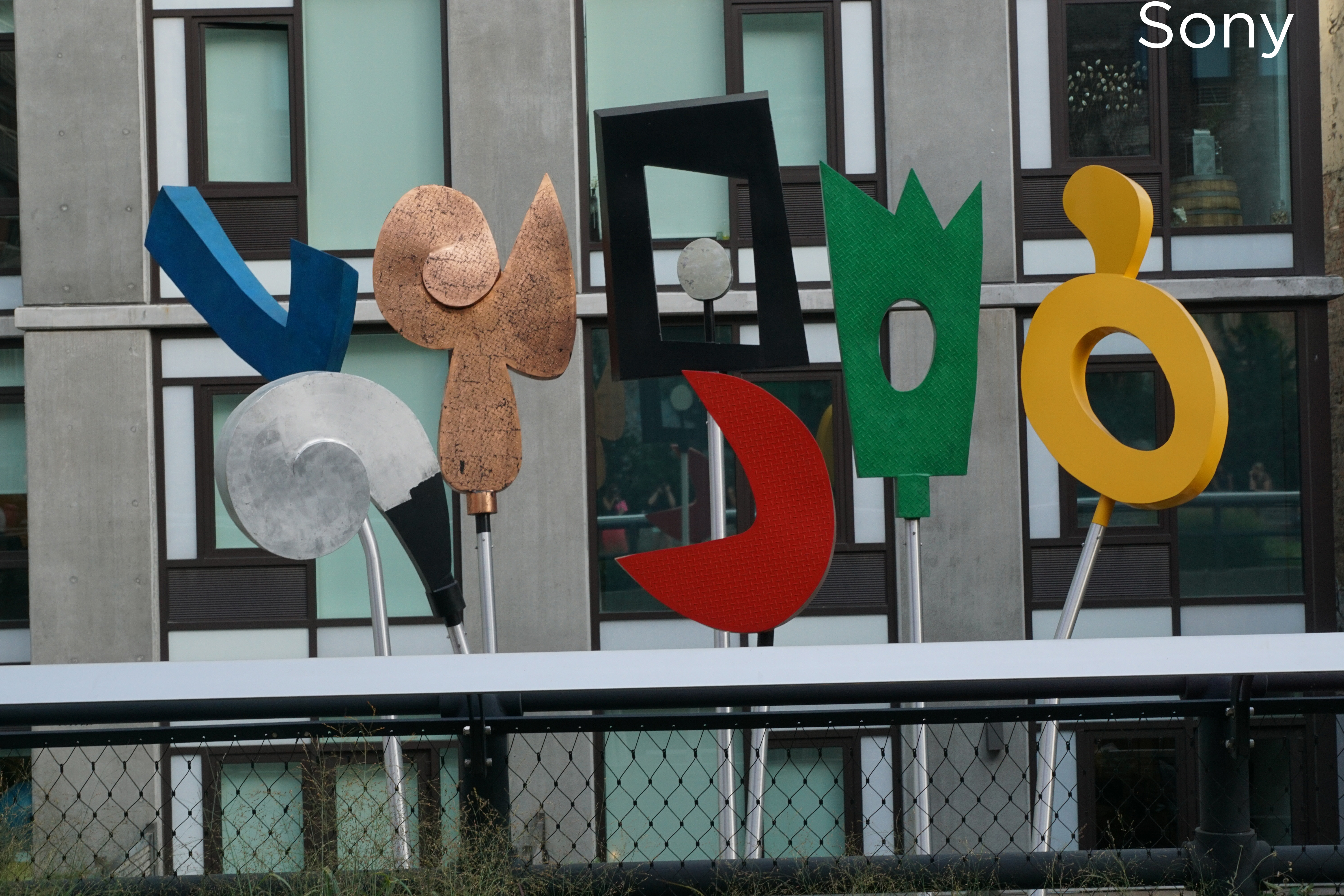
Low-Light Results: High ISO Range Captures More Detail
With a light-sensitivity range of ISO 100 to 25,600, the A77 M2 is capable of capturing brighter and sharper images in darker situations than competitors such as the Canon 70D (which can achieve ISO 25,600, though Canon recommends staying at 12,800).

At a night game during the US Open, my picture of the Arthur Ashe stadium lit by floodlights is so clear you can see individual people in their seats if you zoom to 100 percent.
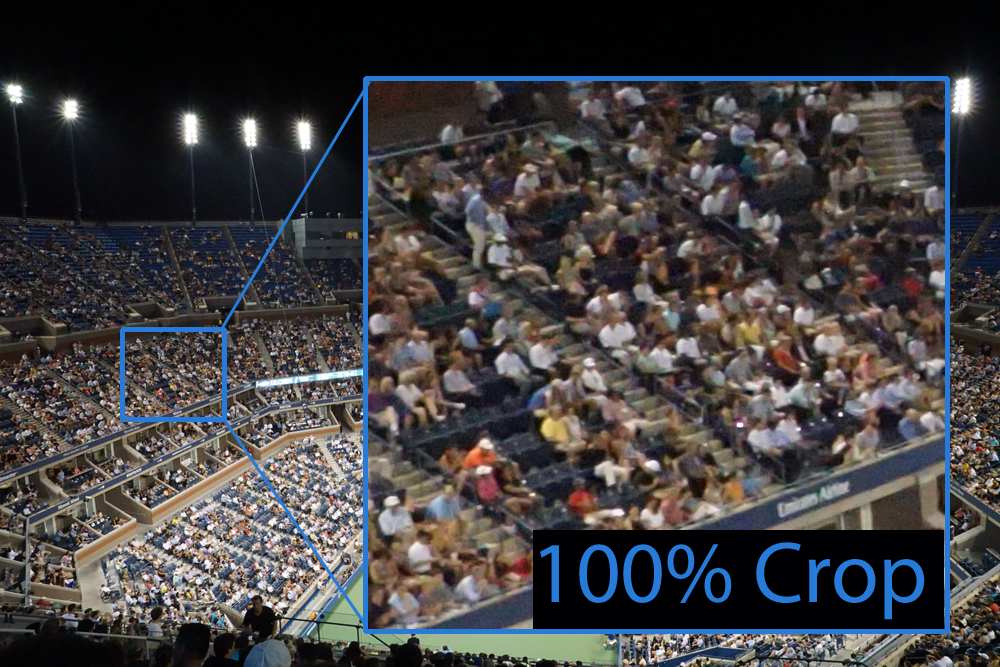
In even more challenging light situations, such as the nighttime view from my 36th-floor Hell's Kitchen apartment, the A77 M2 delivered pictures with crisp detail. With a top limit of ISO 25,600, the A77 M2 was able to snap photos of the Manhattan skyline at shutter speeds of 1/60, which is fast enough for handheld shots. (Shooting in aperture-priority mode, I set the aperture to f/2.8 to enable that shutter speed.)
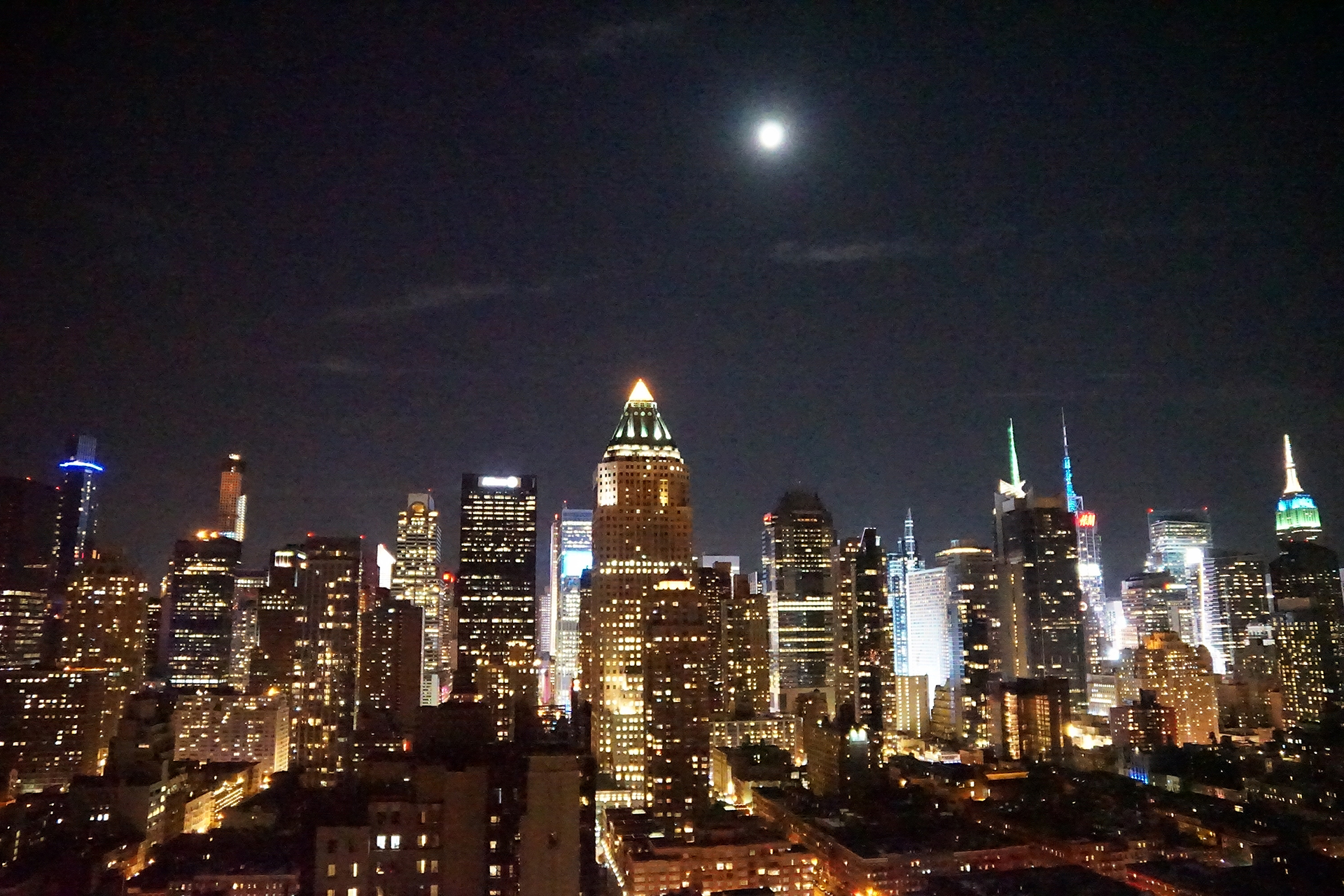
However, Sony's JPEG processor was a bit overzealous. The JPEGs of my nighttime cityscapes appeared muddy in parts, as if someone had finger painted the black sky. In comparison, the unprocessed RAW version of the same shot showed crisp detail, but naturally also plenty of chroma noise (sharp, colored dots). Using Adobe Photoshop CC, I easily reduced the amount of noise to output a crisp JPEG without that finger painted look.
MORE: Best DSLR Cameras
With the A77 M2, you should be able to rely on the camera's JPEG processor up to ISO 6400 to deliver pictures that are relatively noise- and smudge-free. If you start seeing the smudged texture on your images, you're better off processing the RAW version yourself. To be safe, make sure you're shooting in RAW+JPEG (at least in low light) so you have a chance to rescue images in editing.
Video: Good Image Quality, Slight Stuttering
Thanks to its translucent mirror technology with full-time phase-detection autofocus, the A77 M2 deftly kept moving targets sharp even as I panned from a close-up object to one in the distance. All the videos for this review were shot at 1080p and 30 and 60 frames per second, and recorded in AVCHD format. The M2 also shoots in MP4, but not at the Full HD resolution that you get with AVCHD.
On a sunny day in Central Park, I recorded the busy road full of cyclists, horse carriages and people milling around at 1080p 30fps. The video displayed little to no shutter roll – a distortion that happens when the camera is unable to keep up with a moving object, resulting in stretched images. The Sony's footage did show some stutter as I panned slowly across the scene, though.
In darker environments, such as the streets of the Las Vegas strip at night, the A77 M2 showed some shutter roll (also at 30fps) in the fast-moving limbs of a street performer as he cartwheeled in front of an amused audience. The overall exposure in the video was somewhat even. Bright lights in the background were not blown out, but the features of a darker-skinned performer were a bit lost in the shadow and hard to see. More impressively, though, the cartwheeling man was sharp throughout the clip, without significant shutter roll.
I then shot 1080p video at 60 fps, but noticed even more stuttering in the clips when panning across a scene. Stuttering was also somewhat noticeable when subjects in the frame were moving. You won’t notice this effect when playing back the clips in the camera, but you likely will on a computer. We asked Sony's experts about the issue, and they suggested it could be that the computers were not up to the task of playback. But we were using several high-end laptops, including a Dell Latitude 6430u and an Apple MacBook Pro Retina Display. Clips uploaded to YouTube also exhibited the stuttering.
It may be that the AVCHD files are so large that they would require some processing and compression to play smoothly on typical computers and online. Exporting 1080p files in the MP4 format might be better for most users, but the A77 M2 isn't currently able to do this. (Sony first introduced this capability in its new entry-level a5100 mirrorless camera.) For now, the best advice, if you are not shooting professional video, is to shoot in AVCHD but at 30fps.
The A77 M2’s onboard stereo mics picked up sound very well. In the Central Park video, not only was the clopping of horses' hooves distinct, but the chatter of the carriage passengers was also crisp. I could hear birds chirping and kids laughing in the background.
Sony vs Canon EOS 70D Video
Canon’s EOS 70D packs its own system, called dual-pixel autofocus, for tracking a moving subject while recording video. Canon’s technology has 80 percent of its image-sensor pixels run double duty, capturing images and acting as autofocus sensors at the same time. I tested this out at Madison Square Park, filming parkgoers going about their business.
MORE: Best Bridge Cameras
For the most part, there wasn’t a significant difference in the focusing ability of the two cameras. However, the Canon definitely outperformed the Sony, as it was able to shift focus quickly from a set of bars in the foreground to blades of grass behind the bars within a fraction of a second. The Sony focused on the bars but struggled to shift to the new subject.
Also, while you can tap on the LCD monitor to designate a subject on the Canon 70D, the Sony just decides what to focus on. You can half-depress the shutter while recording to force the camera to refocus, but during my testing this was often cumbersome and I could not get the result I wanted.
The Canon shifted focus with ease, creating a pleasingly artistic look, while the Sony held focus on the leaves for a second, then struggled between keeping the leaves and the bar sharp.
Autofocus and Speed
With a shooting speed of 12 frames per second (with autoexposure and autofocus adjustment for each shot) up to 25 images on RAW+JPEG mode, and a top shutter speed of 1/8,000 second, the A77 M2 is quite the speed demon. In comparison, the Canon 70D can shoot only 7 fps up to eight shots on RAW+JPEG mode.
Thanks to the Sony's swift performance, I was able to snap several shots of my friend frolicking on Sheep Meadow in Central Park – and each shot was tack sharp.
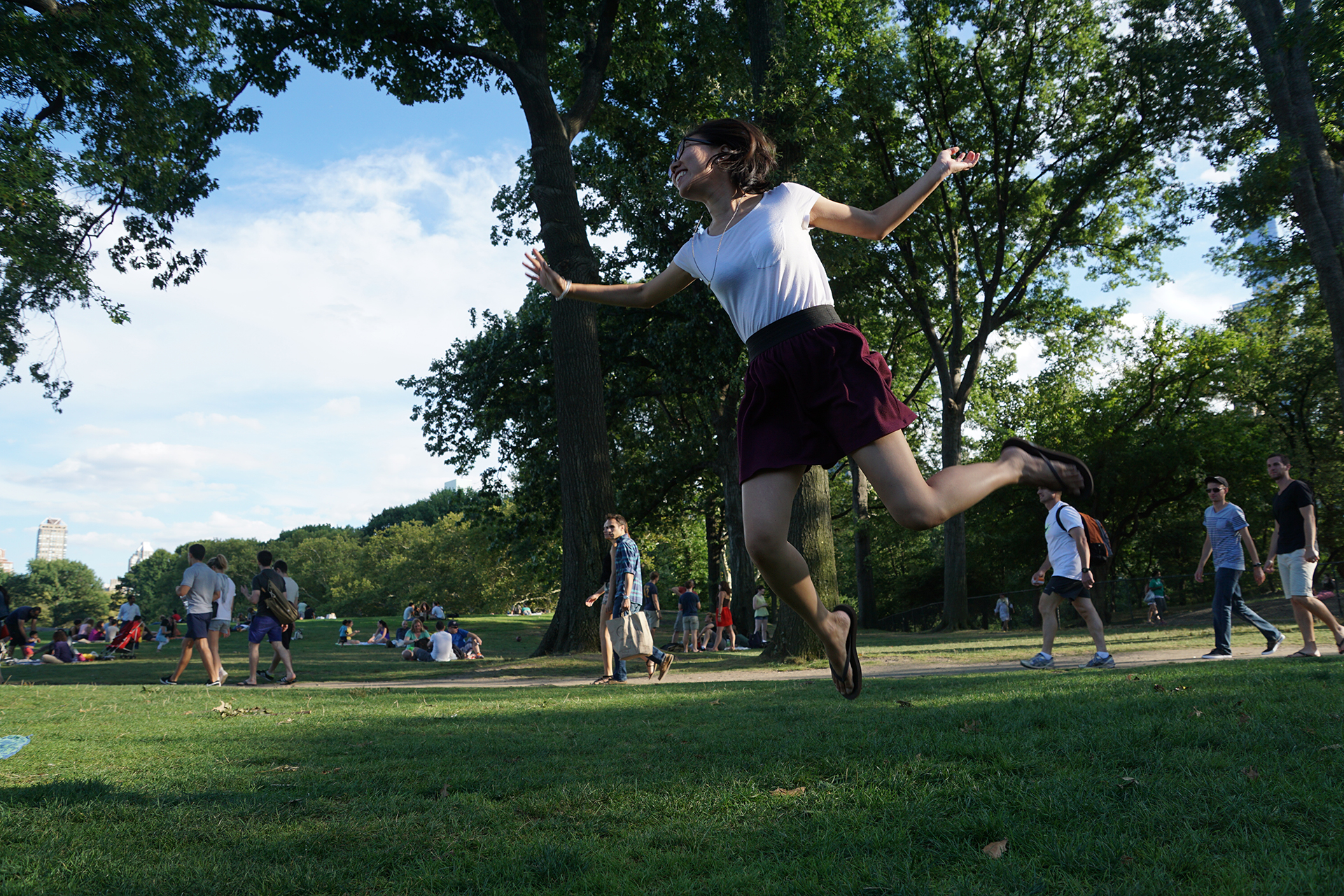
Carrying a 79-point phase-detection autofocus system, the A77 M2 latched on to subjects quickly. During video recording though, the camera had a tendency to shift focus midway through filming, blurring the subject.
Design and Handling: Solid, User-Friendly Build
At 5.62 x 4.12 x 3.25 inches in size and 1.42 pounds (body only), the A77 M2 is a hair lighter than the Canon EOS 70D (1.48 pounds, body only). A rubberized grip on the right of its magnesium alloy body has contours to rest your middle and ring fingers on, while your index finger sits comfortably on the shutter button.
The majority of the A77 M2's controls lie on the right side of its body. I especially liked the 3-inch tilting LCD display on the camera, which you can flip out, rotate and twist around to let you easily compose shots at a wide variety of odd angles — even selfies.
One little annoyance with the A77 M2 is the sensor that detects if you put the viewfinder up to your face. Meant to automatically switch the active display between the viewfinder and the 3-inch LCD monitor, it also turned the LCD black anytime my finger hovered within 2 inches of the viewfinder. Thankfully, you can disable the sensor and use a switch on top of the camera instead to switch between viewfinder and screen.
Battery Life
The A77 M2's battery is supposed to last for 410 images, using the viewfinder, or 480 images with LCD monitor, based on CIPA testing standards. I took the M2 with me to a three-day tech convention in Las Vegas and shot 474 pictures and 10 videos (about 45 minutes in total) on one charge with a mix of viewfinder and monitor use. That's better than the touted ability.
Wireless: Useless
The A77 M2 has Wi-Fi built in for sending pictures from your camera to your smartphone or to remotely control the camera. During my time with the Sony, though, the Wi-Fi sharing function did not work at all, whether I used iOS or Android devices. I connected the phones to the camera's built-in Wi-Fi hotspot, entered the password and waited an eternity for the two devices to link, but it never happened. Canon's 70D has better built-in Wi-Fi capability (though that's not saying much, as it's still rather clunky to set up).
For better wireless connectivity, consider using an Eye-Fi memory card, which gives almost any camera a Wi-Fi connection to your smartphone, tablet or computer. In tests, I've found Eye-Fi very easy to use.
MORE: Camera Buying Guide
Controls: Plenty of Knobs and Dials for Easy Use
It might sound intimidating, but the total of 17 buttons, three wheels, a switch and a joystick make the A77 M2 easy to use. If you've already picked the mode you want to shoot in with the Mode dial on the left, you'll find everything else (such as ISO, White Balance and exposure compensation) easily accessible with your right hand.
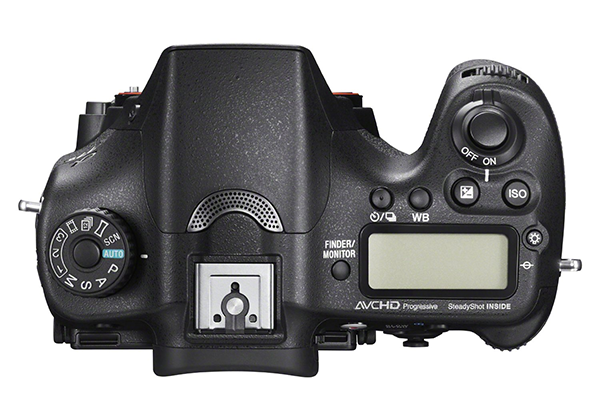
Thanks to the Fn button on the right of the LCD monitor, top-level controls were easy to access. These include exposure compensation, metering mode, ISO light sensitivity, white balance and drive mode. Just press the button and a 6 x 2 grid appears on the LCD or in the viewfinder. You can go through it with the joystick to adjust each box's setting with either wheel on the camera. You can customize this menu to show your preferred options.
A Menu button on the top left of the LCD offers more in-depth and less commonly used settings. Since there isn't a touch screen, you're dependent on the joystick next to the screen to navigate the multiple pages under each of the five major menu tabs.
When you press the Fn button while looking at a playback of a picture or video, you'll bring up options to send that file to your smartphone or computer via Wi-Fi.
The A77 M2 scored well on our test of how easy it is to reach key settings, thanks to a wide array of dedicated buttons. (Settings that have a dedicated button or knob, such as shutter speed, require 0 steps to access.)
| Setting | Button presses to access | Function |
| Shutter | 0* | Length of exposure |
| Aperture | 0* | Amount of light let in |
| ISO | 1 | Light sensitivity |
| Focus Mode | 4 | Point or points used for focus |
| Light metering | 2 | Part of image with optimized exposure |
| Custom white balance | 4 | Tune overall color cast of image |
| Exposure compensation | 1 | Set auto exposure to be darker or lighter |
| Wi-Fi Sharing | 2 | Send images to smartphone, activate remote viewfinder |
| Video recording | 1 | Switch from photo to video and back |
| Play | 1 | View images or videos you've shot |
| Delete image | 1 | Remove image from card |
| Photo capture resolution | 2 | Number of megapixels |
| Photo capture quality | 2 | Amount of JPEG compression/detail, or RAW |
| Video capture quality | 3 | Resolution, frame rate and amount of compression/detail |
| Drive | 1 | Single photo, burst, timer, etc. |
* Measured in the relevant priority mode
Lenses
The Sony A77 M2 is compatible with 12 Sony A-mount lenses. The f/2.8 16-50mm zoom lens we tested provided good color and image detail with some distortion at its widest setting. The amount of stretching was reasonable though, and expected. You can reduce or get rid of the distortion by pulling back a little from 16mm to 20mm.
Sony also offers a f/1.8 35mm prime (nonzooming) lens for a low $218, which should be great for food and portrait photography. Both Sony and third-party lens maker Sigma offer a 50mm prime lens in the $400 to $500 price range, and sample pictures taken with the Sigma 50mm f/1.4 EX DG HSM setup show that this lens delivers good clarity and color.
The M2 is also compatible with a wide array of A-mount lenses from other third-party manufacturers, such as Tamron and Tokina.
Bottom Line
All in all, Sony's Alpha 77 M2 is a great camera that performs well in everyday situations. A large ISO range also makes it ideal for extreme low-light photography, while the translucent mirror system enables decent autofocus while you're shooting video. The camera is also easy to use, and I especially loved the tilting LCD for selfies or a variety of odd-angled shots. Plus, the Alpha 77 M2 boasts an impressively fast still shooting speed (12 fps) that puts rivals to shame.
Those who want a rig for video recording may prefer Canon's EOS 70D, which has a superb dual-pixel autofocus system that effectively latches on to and tracks moving subjects. But the 70D only shoots up to 30 fps, while the Sony gets up to 60 fps. So each camera has its strengths and weaknesses. Ultimately, if action photography is a higher priority for you than video, the $1,050 Sony Alpha 77 M2 is an excellent choice.
Cherlynn is Deputy Editor, Reviews at Engadget and also leads the site's Google reporting. She graduated with a Master’s in Journalism from Columbia University before joining Tom's Guide and its sister site LaptopMag as a staff writer, where she covered wearables, cameras, laptops, computers and smartphones, among many other subjects.
-
Mike Mike Mike It's a pity that really unique features like perfect live view, AF system incl. AF limiter, eye and face detection and are mentioned not very detailed.Reply
BTW: It doesn't support just 12 lenses, there are about 70 lenses for a mount available incl. old Minolta glass.
